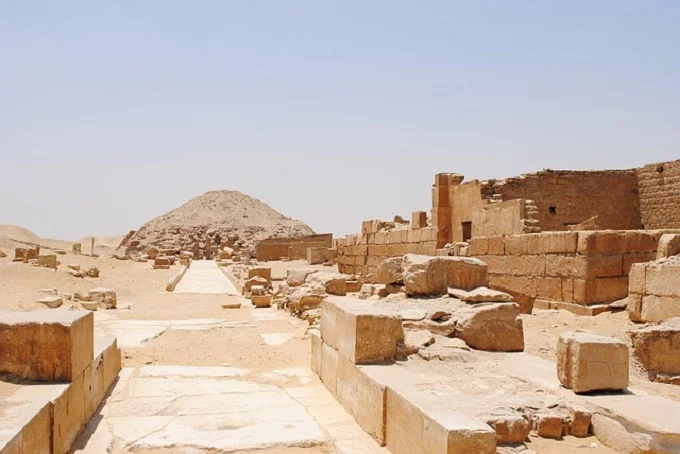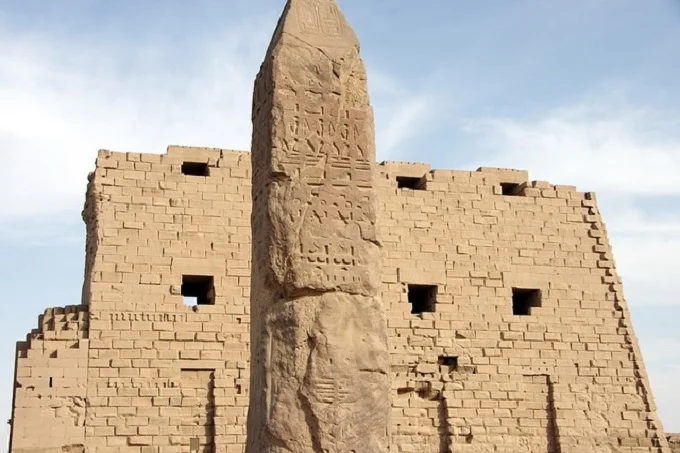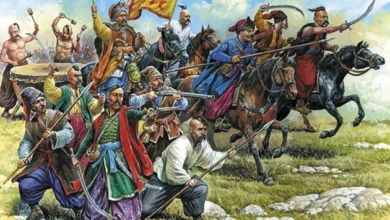How many civilizations have there been on Earth?

Modern scholars have long preferred to limit the history of human civilization to a few thousand years, to which the abyss of the savage and brutal Stone Age supposedly extended. But the discovery of such ancient cities as Chatal-Guyuk in Asia Minor or Jericho in Israel has forced a slightly different view of the matter and extended the cultural period of human existence by some four or five millennia.
As for the written testimonies of the ancients, however, science continues to take into account only those which it recognized several dozen or even a hundred years ago. Meanwhile, there are documents that allow us to calculate the history of Earth’s civilization by at least tens of thousands of years.
Paradoxes from serious scientists
George Syncellus had a reputation as an eminent historian. He lived at the turn of the eighth and ninth centuries after Christ. For many years Syncellus preached in Palestine, was the private secretary to the Patriarch of Constantinople Tarasy (784-806), after whose death, he withdrew to a monastery, where he became a writer.
Syncellus’s most important work is considered the Selected Chronographies. In creating it, the historian used the writings of ancient authors such as Josephus Flavius, Manephon, and the famous Babylonian priest Beros, whose works one finds much that is highly unusual. The erudition of George Syncellus even allowed him to reasonably criticize the father of church history, Eusebius of Caesarea, for falsifying Egyptian chronology.
Syncellus himself, in particular, wrote: “The Egyptians have a certain plate called the ‘Old Chronicle’; it contains 30 dynasties over 113 generations over a period of 36,525 years. The first group (dynasty) of princes is the Aurites, the second is the Mestroenes, and the third is the Egyptians.” The Chronicle reads, “No time is defined for Hephaestus, for he was both day and night. Hephaestus’ son Helios ruled for 30,000 years. Then Chronos and the 12 gods ruled for 3,984 years; next were the demigods numbering eight, who ruled for 217 years.”
The philosopher Simplicius of Cilicia, one of the founders of the Alexandrian school of Neoplatonism, distinguished by his business-like nature and strict attitude to facts, in the 6th century, even reported that he heard that the Egyptians were conducting astronomical observations over the past 630 thousand years.
Even if he was wrong, and it must be a matter of months, it still accumulates an impressive period – 52.5 thousand years. The late Antique historian of philosophy, Diogenes of Laertes, who had a sharp and incisive mind, established that the Egyptians had been making their astronomical calculations for 48,863 years before Alexander the Great. The encyclopedic writer of the first half of the fifth century, Marcian Capella, claimed that the Egyptians had secretly studied the stars for 40,000 years before they revealed their phenomenal knowledge to the world.

The Zodiac – evidence of the antiquity
Even Manephon, whose list of the dynasties of the pharaohs is a cornerstone of modern Egyptology, gave evidence in favor of much deeper antiquity of Egyptian civilization than is now commonly believed.
In the surviving passages of his History of Egypt, there are the following words: “The first man [or God] in Egypt was Hephaestus, who is also known to the Egyptians as the discoverer of fire. The successor of his son Helios [the Sun] was Sosis, followed in turn by Kronos, Osiris, Typhon, Osiris’ brother, and finally. Horus, son of Osiris and Isis. They were the first rulers of Egypt. After that, royal power passed -from one to the other, uninterrupted, all the way to Bidis for 13,900 years. Then for 1,255 years, the gods and demigods ruled, and again for 1,817 years, another royal family was given power in the country. Then 30 more Memphis kings ruled for 1,790 years, and after them, 10 more kings for 350 years. Then came the reign of the “spirits of the dead,” which lasted 5,813 years.
The arrangement of the stars, as it was about 90,000 years ago, is shown on the zodiac, which decorates the ceiling of the temple of Hathor in the Egyptian city of Dendera. Moreover, this zodiac is so magnificent that the original ceiling was removed and transported to Paris during the Egyptian expedition of Napoleon I, and a plaster copy was placed in the place of the original.
The astrological symbols of the zodiac, as the British ufologist Raymond Drake writes, according to the precession of the equinoxes, signify the passage of three and a half great cycles of 25,800 years each. The original temple has long since been reduced to dust, but the unique zodiac was copied by the initiates, eager to preserve this evidence of the profound knowledge of the ancients. A dating of 90,000 years shocks our modern minds, accustomed to limiting the history of civilization to four or five millennia, but similar zodiacs have been found in temples in northern India and on Babylonian clay tablets.
King’s Lists
It is interesting that the Chaldeans (Semitic livestock-raising tribes who inhabited the outskirts of Babylonia in the first half of the first millennium BC) also had so-called king’s lists, which operated on dates unimaginable antiquity. The history of the Sumerians, who preceded the Babylonians in Mesopotamia, according to these lists, began with the creation of man. The Bible speaks of 10 forefathers, if you count from Adam; the Sumerians called them the most ancient kings, and they are also 10. Israel’s forefathers were noted for their unusual longevity, but the “Methuselah century” against the background of the longevity of the Sumerian rulers does not seem so great.
According to one such royal list, which mentions only eight kings, they reigned for 241,200 years. According to another, which mentions all 10, it is 456,000 years. After that, there was a flood, but humanity was reborn thanks to the surviving righteous Utnapishtim. A new dynasty of kings arose, which descendants perceived as gods and demigods. There were 33 kings in the dynasty who ruled for a total of 24,510 years. After that, there were several other far less long-lived dynasties, but the story that science now takes seriously begins with the death of the epic hero Gilgamesh around the beginning of the twenty-sixth century BC.
How many human beings were there?
A very unusual piece of information about the past of mankind is also contained in the mythology of the Aztecs and Mayans. It is not even about one, but about several mankind, which definitely resonates with the teachings of the theosophists.
The Codex Vaticanus, an authentic monument of Aztec culture, says that the first race on Earth were giants, and they died of starvation. The second humanity was the victim of a great conflagration. Some of these people, according to legend, managed to survive by creating tunnels and fortified chambers beneath the surface of the planet. Traces of ramified underground structures, whose age is unlikely to estimate, are found in many parts of our planet, there are such structures in South America, and the African Sahara Desert, and in India, and Western Europe.
The third mankind in Aztec myths are named reasonable monkeys, which did not become as a result of some cataclysm. The fourth race was similar to modern people and drowned in the waters of the flood. The fifth lives and evolves to this day.
Codex Rios and Codex Telleriano-Remensis, documents copied in Latin script in the Aztec language from earlier sources, also tell of four living before the present humanity, which, again, were destroyed by global catastrophes, albeit in a different sequence. The Aztec sources give between four and five thousand years for the existence of each of these humanities.
But there is a curious nuance here. The Aztecs and Maya, in addition to the usual dating, operated with a number of so-called sacred years, the duration of which is, for example, for the sacred year Katun – 20 years, for Bactun – 400 years, for Pic-tun – eight thousand years, and for the longest in this sequence Alautun – 64 million years! So it would still be necessary to clarify what years the Mesoamerican Indians are actually talking about in such chronicles.
Certainly, such dating looks frankly frightening and even delirious. They could, perhaps, be put aside, as is, by and large, done by serious science. However, the inconceivable antiquity of artifacts, which were found in different parts of our planet by researchers and random people, we think, make us take more seriously the “oddities” of ancient documents given.




